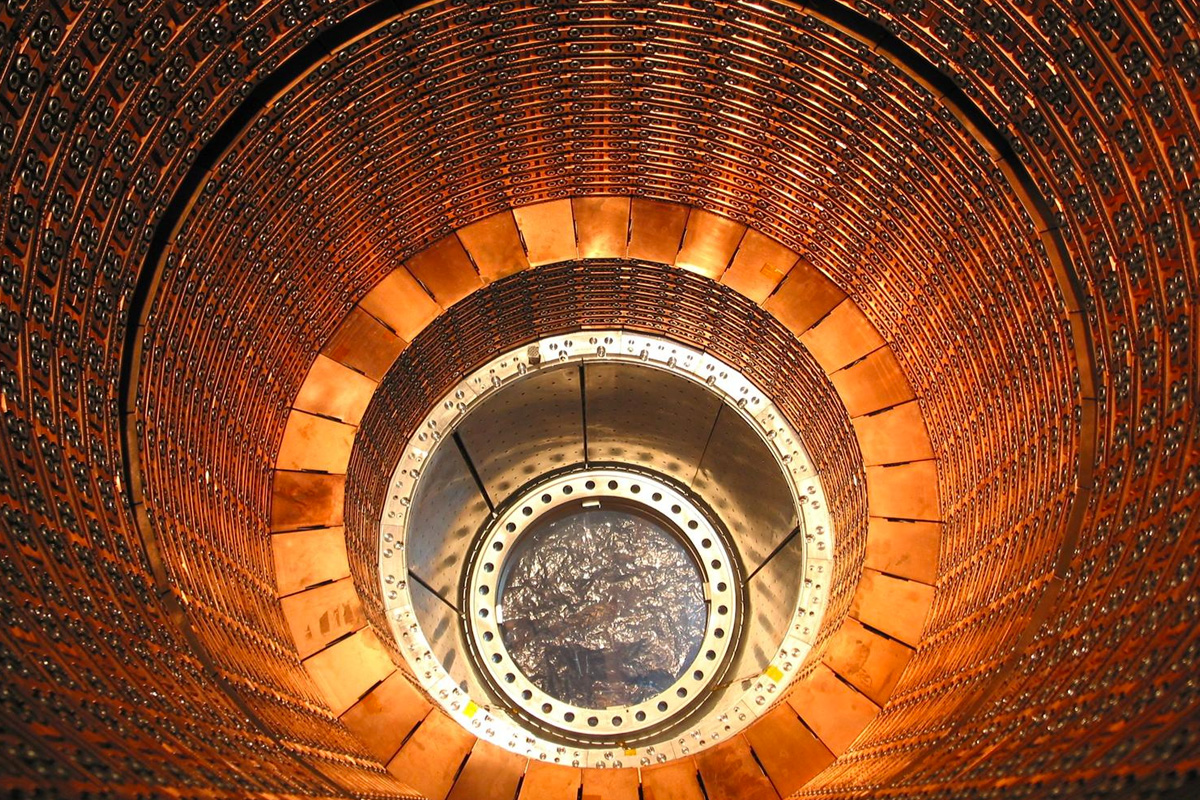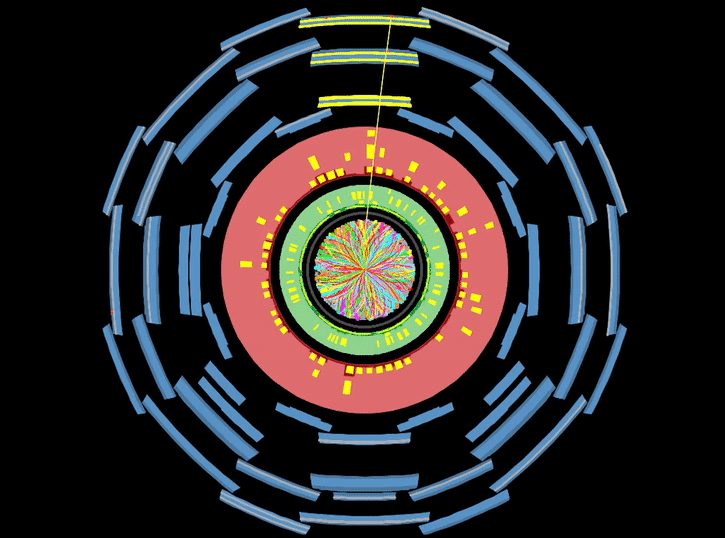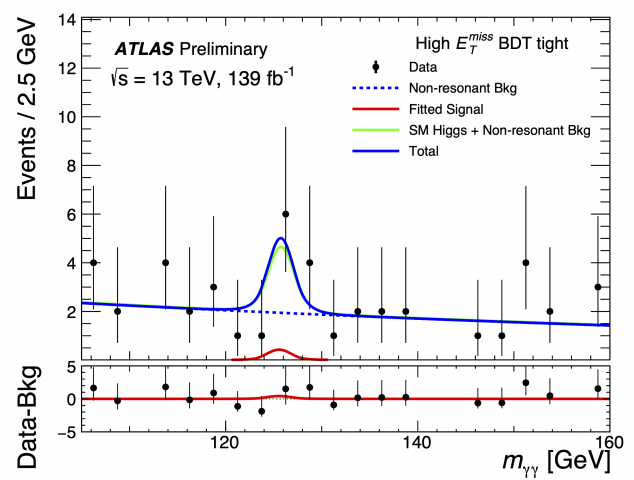Access to Collaboration Site and Physics Results
Calorimeters

Calorimeters measure the energy a particle loses as it passes through the detector. It is usually designed to stop entire or “absorb” most of the particles coming from a collision, forcing them to deposit all of their energy within the detector. Calorimeters typically consist of layers of “passive” or “absorbing” high-density material – for example, lead – interleaved with layers of an “active” medium such as solid lead-glass or liquid argon.
Electromagnetic calorimeters measure the energy of electrons and photons as they interact with matter. Hadronic calorimeters sample the energy of hadrons (particles that contain quarks, such as protons and neutrons) as they interact with atomic nuclei. Calorimeters can stop most known particles except muons and neutrinos.
The components of the ATLAS calorimetry system are: the Liquid Argon (LAr) Calorimeter and the Tile Hadronic Calorimeter.
Tile Calorimeter (TileCal)
- Central barrel made of 64 wedges, each 5.6m long and weighing 20,000 kg
- Two extended barrels each with 64 wedges, each 2.6m long and weighing 9,600 kg
- 500,000 plastic scintillator tiles
Liquid Argon (LAr) Calorimeter
- Barrel 6.4m long, 53cm thick, 110,000 channels.
- Works with Liquid Argon at -183ºC
- LAr endcap consists of the forward calorimeter, electromagnetic (EM) and hadronic endcaps
- EM endcaps each have thickness 0.632m and radius 2,077m
- Hadronic endcaps consist of two wheels of thickness 0.8m and 1.0m with radius 2.09m
- Forward calorimeter has three modules of radius 0.455m and thickness 0.450m each






